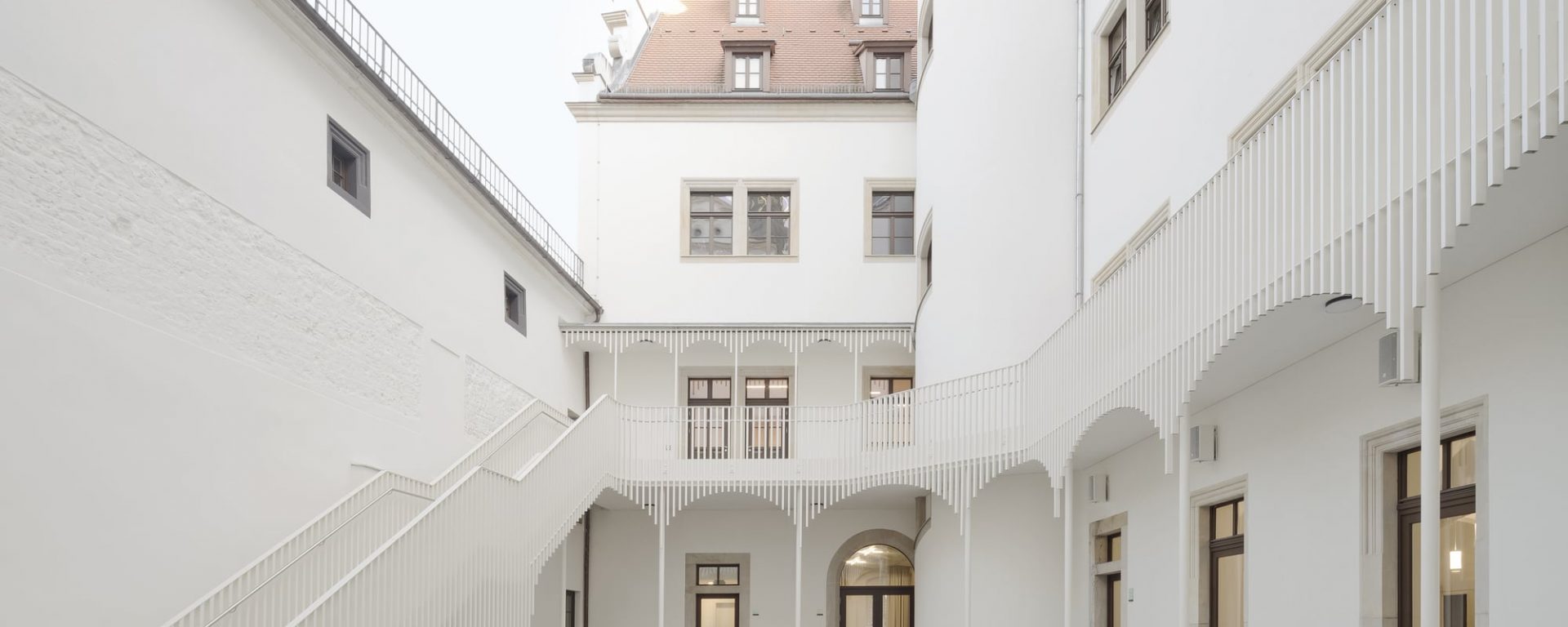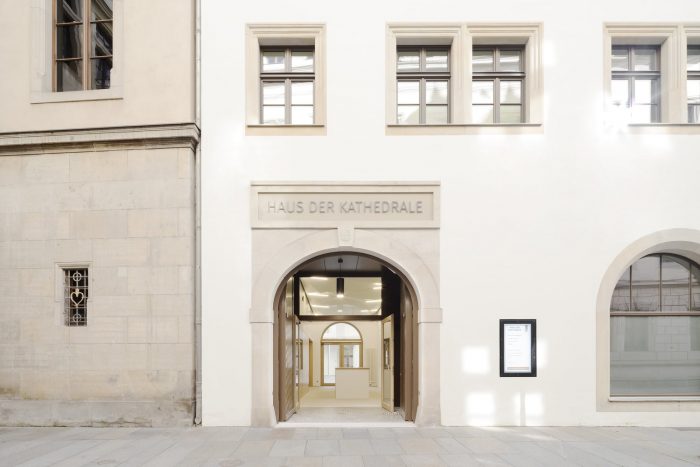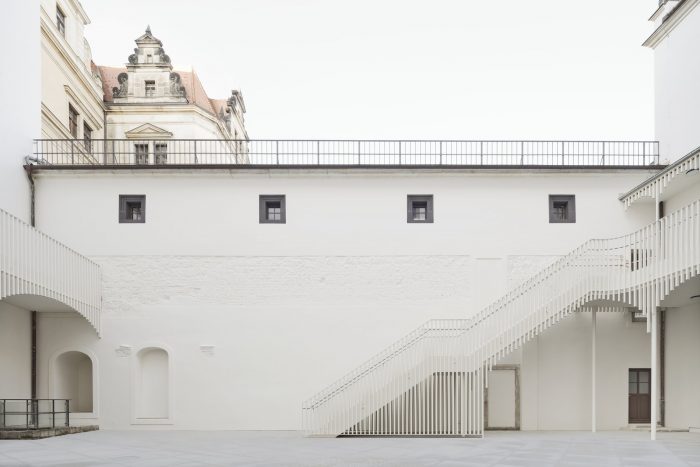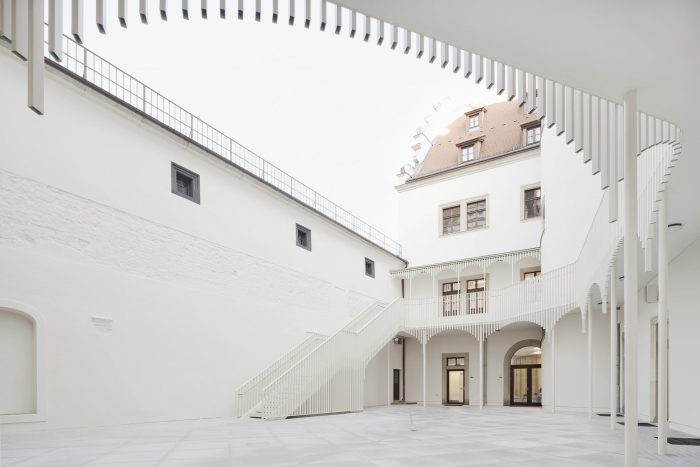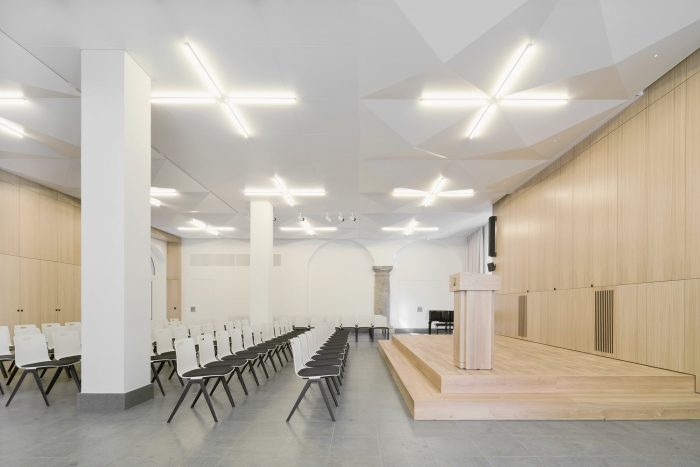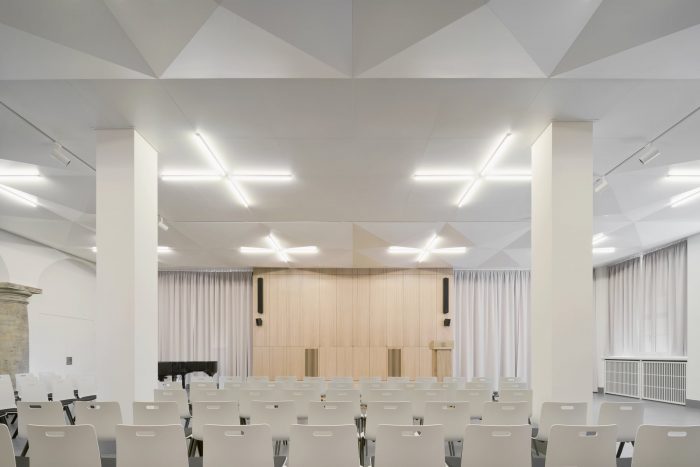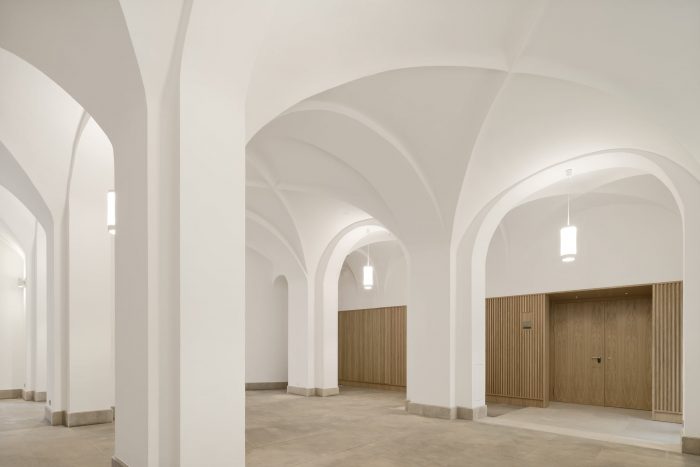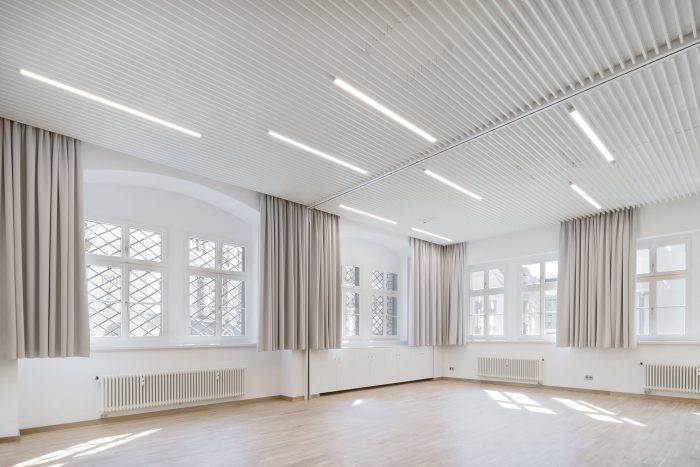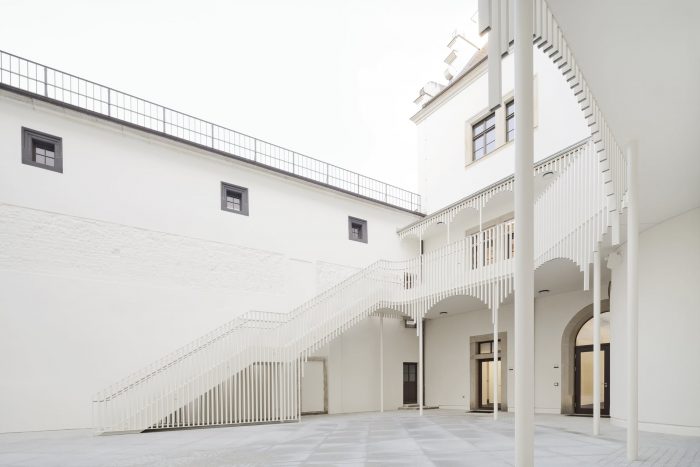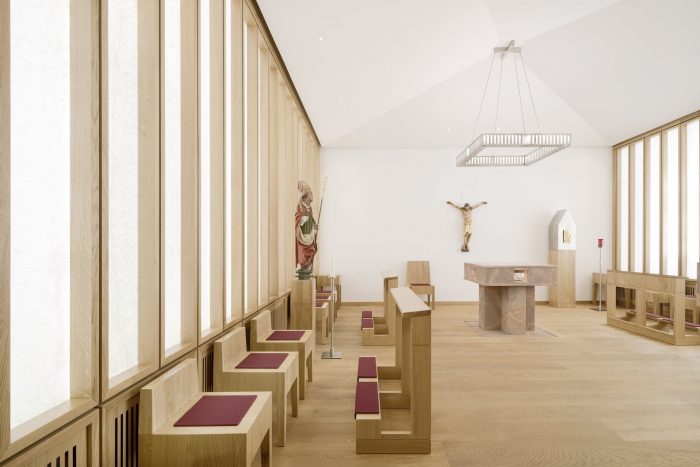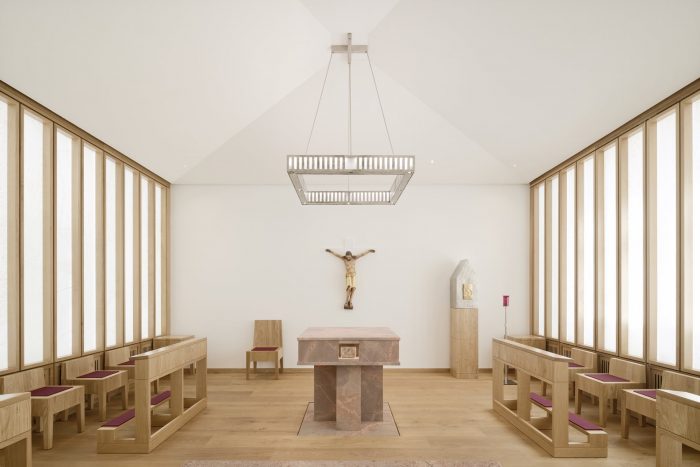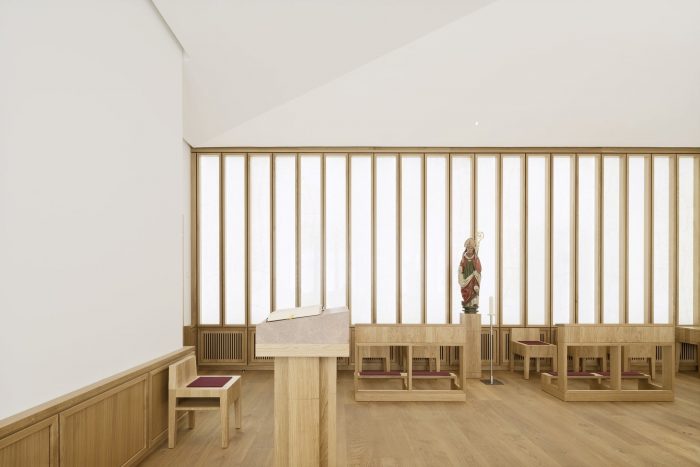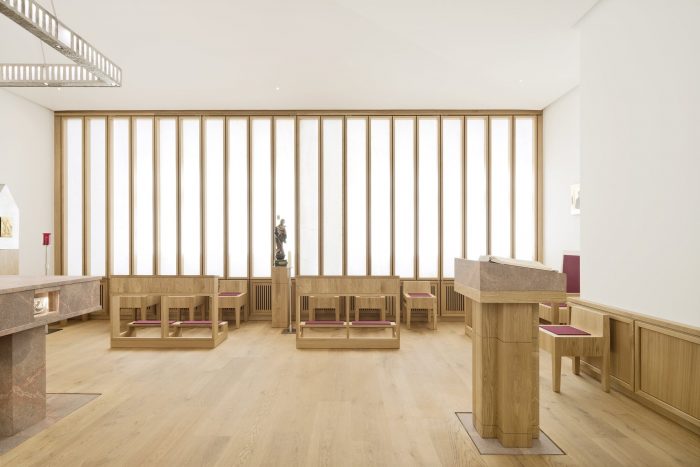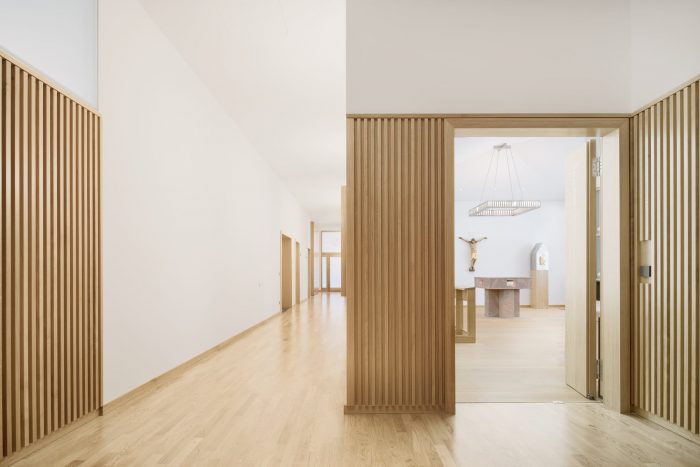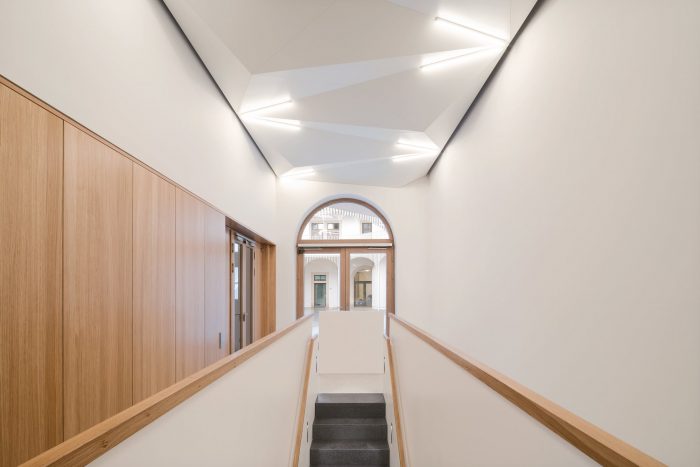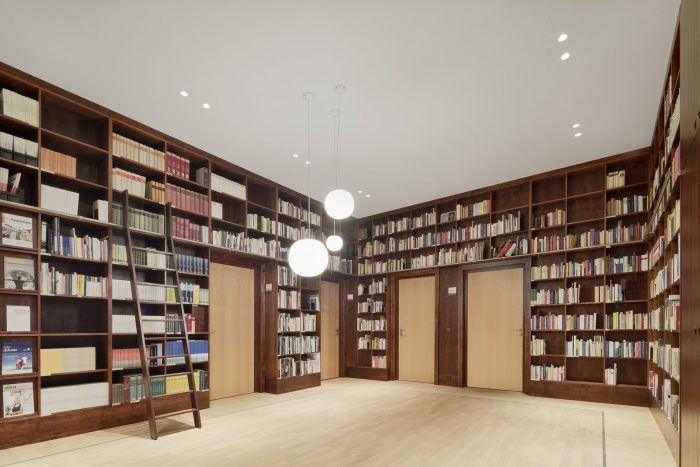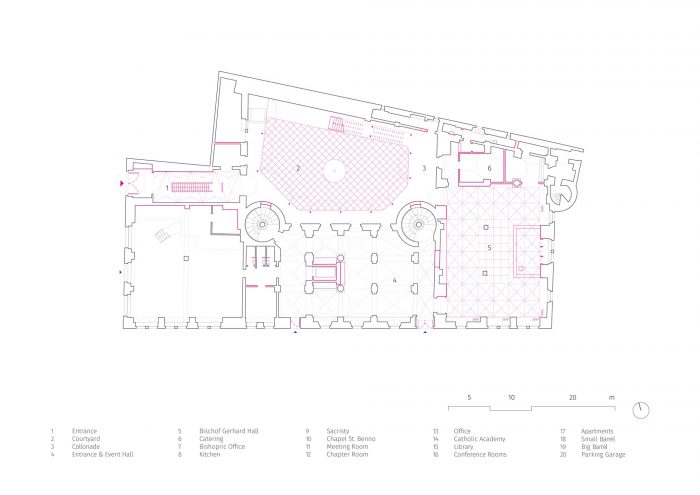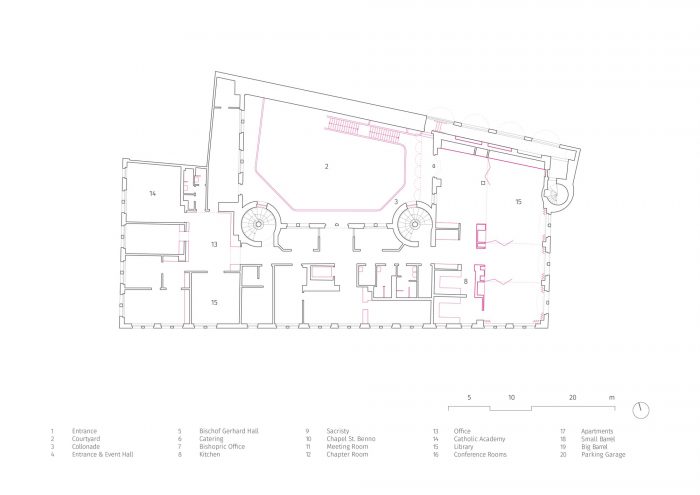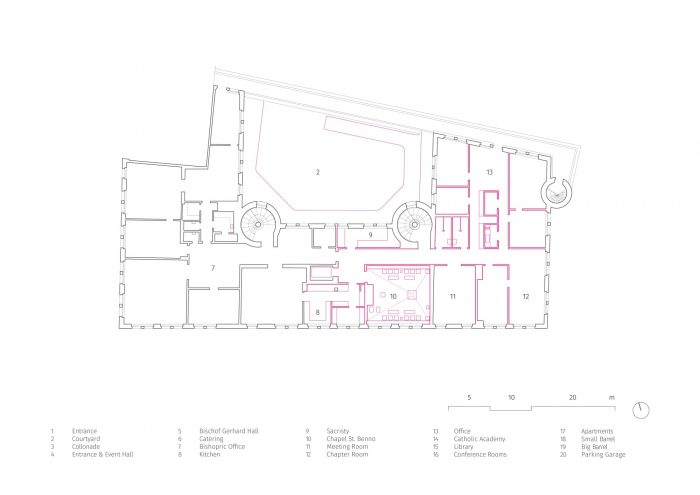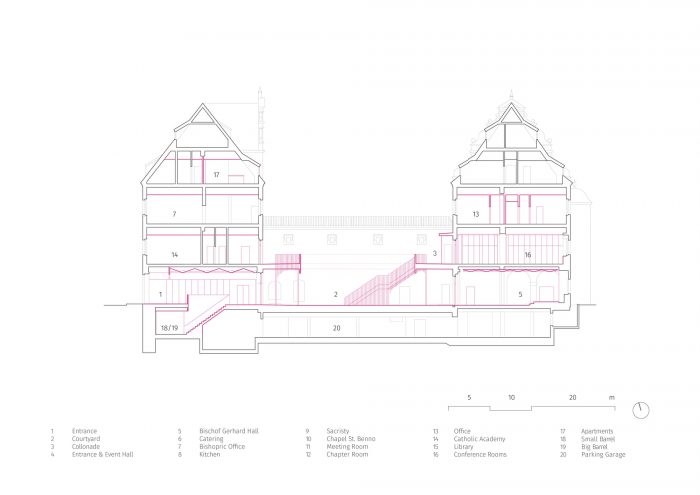大教堂之家 “是指位于德累斯顿老城中心的前大法官之家。它紧邻旅游胜地Stallhof(马厩院)和Residenzschloss(前皇宫)。在第二次世界大战中,德累斯顿老城大部分被摧毁,在前民主德国时期没有进行重建。1997年,在德国统一后不久,位于现在被列为 “文化历史中心 “的建筑已经被重建–作为第一批建筑之一。
The House of the Cathedral refers to the former chancery house in the city center of Dresden Old Town. It is in the immediate vicinity of the tourist magnets Stallhof (Stable Yard) and Residenzschloss (former Royal Palace). In World War II the Old Town of Dresden was largely destroyed and had not been reconstructed during the period of the former GDR. In 1997, shortly after the German reunification, the building located in the now listed “cultural-historical center” had been reconstructed – as one of the first buildings.
大教堂之家结合了各种用途,如主教的住所和德累斯顿-迈森主教区的行政管理,公寓和客人的住所,以及大教堂的教区和青年室以及各种公共活动室。在七个部分的建设措施中,这些用途在持续的运营过程中被重新组织和扩大,以利于公共、半公共和私人单位的混合共存。
The House of the Cathedral combines various uses such as the bishop’s residence and the administration of the Bishopric of Dresden-Meissen, apartments and guest residences, and parish and youth rooms of the Cathedral as well as various rooms for public events. In seven partial construction measures, the uses were reorganized and expanded during ongoing operations in favor of a hybrid coexistence of public, semi-public, and private units.
除了这种重组,活动空间的房间布局也被重新设计,一个小教堂被安置在建筑的核心位置作为新的中心,一个黑暗的走廊被升级为新的图书馆和非正式会议场所。院子被重新设计为一个半公共的城市分布和活动空间,所有的地面使用都向其走道开放。以前的车辆通道现在作为新的主入口,从而使大教堂的房子与繁华的Schlossstrasse的公众保持一致。
In addition to this reorganization, the room layouts of the event spaces were redesigned, a chapel was located in the core of the building as the new center and a dark hallway was upgraded as the new library and informal meeting place. The courtyard was redesigned as a semi-public, urban distribution and event space with all ground-level usages opening up to its walkway. The former vehicle access now serves as the new main entrance and thus aligns the House of the Cathedral with the public of the bustling Schlossstrasse.
在其定位和不同功能的并列中,大教堂之家成为一个统一的场所。建筑任务的实施、用途的重组和不受限制的同时性、房屋的开放和朝向市中心以及无障碍通道的建立,都加强了这种统一性–这也是建筑所有者从一开始的中心主题。
In its orientation and the juxtaposition of different functions, the House of the Cathedral is a unifying locus. The implementation of the building task, the reorganization and unrestricted simultaneity of the uses, the opening, and orientation of the house towards the City Center as well as the creation of barrier-free access strengthen this togetherness – which was also a central theme for the building owners from the beginning.
混合用途和不同年龄段的人在房子里的共存问题,以及现有和新元素的共存问题都得到了解决。因此,该建筑并没有被完全改造,而是本着可持续发展和节约资源的精神,对现有结构进行再利用,并继续使用,同时有选择地实施新元素,从而加强现有结构。
The coexistence of the hybrid uses and the different age groups in the house were addressed, as was the coexistence of existing and new elements. Thus, the building was not completely overhauled, but rather, in the spirit of sustainability and resource conservation, the existing structure was reused and continued to be used, while new elements were implemented selectively, thereby enhancing the existing structure.
Architects: Alexander Poetzsch Architekten
Area : 3027 m²
Year : 2021
Photographs :Brigida González
Manufacturers : AGROB BUCHTAL, Brunner, Schörghuber
Structural Engineering : Seel+ Hantschke Beratende Ingenieure GmbH
Electrical Engineering : Ingenieurbüro Lorenz
Light Design : Anke Augsburg Licht
Project Leader : Alexander Poetzsch, Ina Greifenhagen, Burkhard Schoebl
Project Architect : Fabian Tschoek, Elias Betka, Jana Laepple, Matthias Opitz, Thorsten Boelle
Building Services : Ingenieurbüro Dr. Scheffler + Partner GmbH
Kitchen Planning : Ingenieurbüro Katerbaum
City : Dresden
Country : Germany

